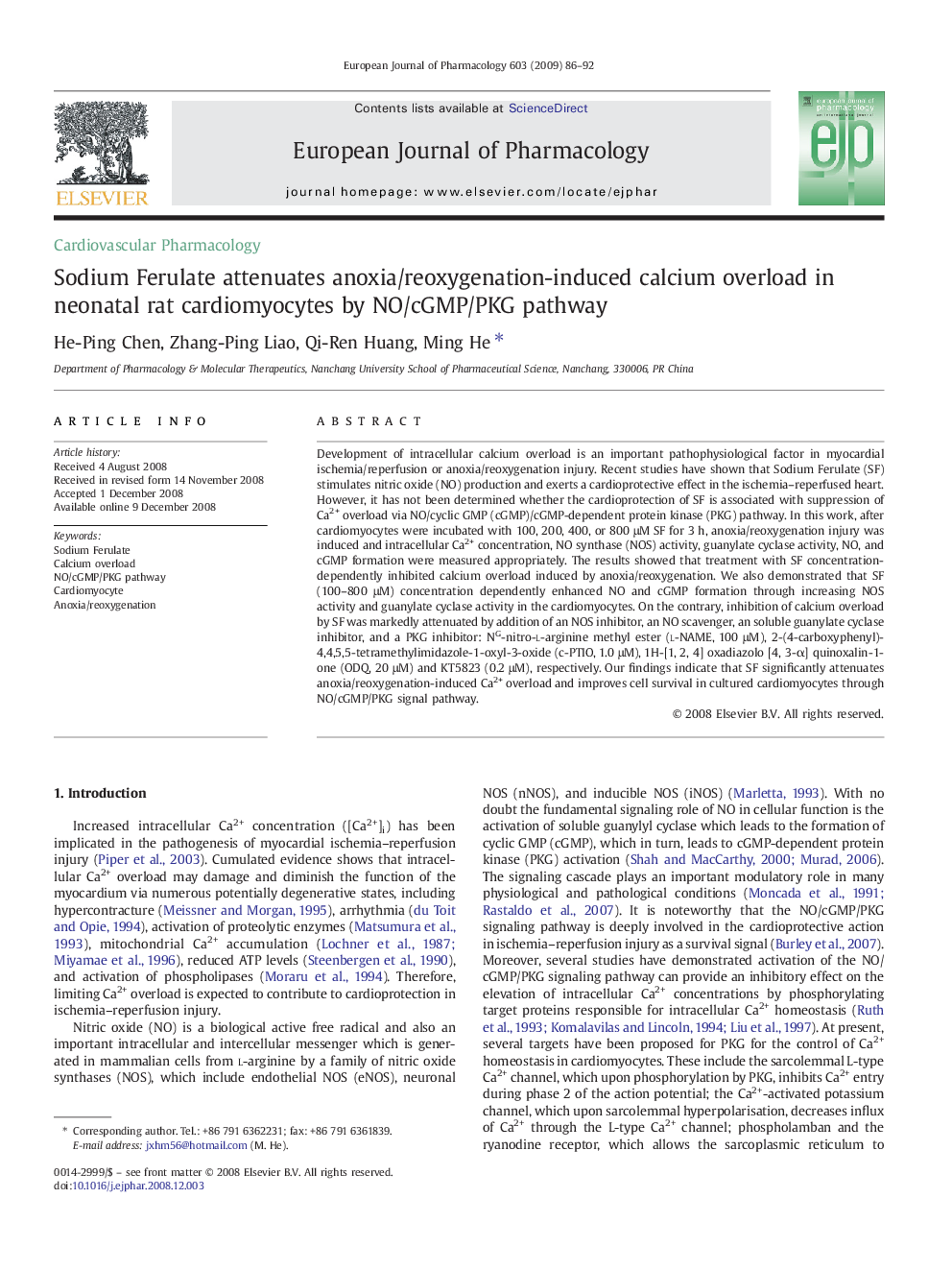| Article ID | Journal | Published Year | Pages | File Type |
|---|---|---|---|---|
| 2534479 | European Journal of Pharmacology | 2009 | 7 Pages |
Development of intracellular calcium overload is an important pathophysiological factor in myocardial ischemia/reperfusion or anoxia/reoxygenation injury. Recent studies have shown that Sodium Ferulate (SF) stimulates nitric oxide (NO) production and exerts a cardioprotective effect in the ischemia–reperfused heart. However, it has not been determined whether the cardioprotection of SF is associated with suppression of Ca2+ overload via NO/cyclic GMP (cGMP)/cGMP-dependent protein kinase (PKG) pathway. In this work, after cardiomyocytes were incubated with 100, 200, 400, or 800 μM SF for 3 h, anoxia/reoxygenation injury was induced and intracellular Ca2+ concentration, NO synthase (NOS) activity, guanylate cyclase activity, NO, and cGMP formation were measured appropriately. The results showed that treatment with SF concentration-dependently inhibited calcium overload induced by anoxia/reoxygenation. We also demonstrated that SF (100–800 μM) concentration dependently enhanced NO and cGMP formation through increasing NOS activity and guanylate cyclase activity in the cardiomyocytes. On the contrary, inhibition of calcium overload by SF was markedly attenuated by addition of an NOS inhibitor, an NO scavenger, an soluble guanylate cyclase inhibitor, and a PKG inhibitor: NG-nitro-l-arginine methyl ester (l-NAME, 100 μM), 2-(4-carboxyphenyl)-4,4,5,5-tetramethylimidazole-1-oxyl-3-oxide (c-PTIO, 1.0 μM), 1H-[1, 2, 4] oxadiazolo [4, 3-α] quinoxalin-1-one (ODQ, 20 μM) and KT5823 (0.2 μM), respectively. Our findings indicate that SF significantly attenuates anoxia/reoxygenation-induced Ca2+ overload and improves cell survival in cultured cardiomyocytes through NO/cGMP/PKG signal pathway.
